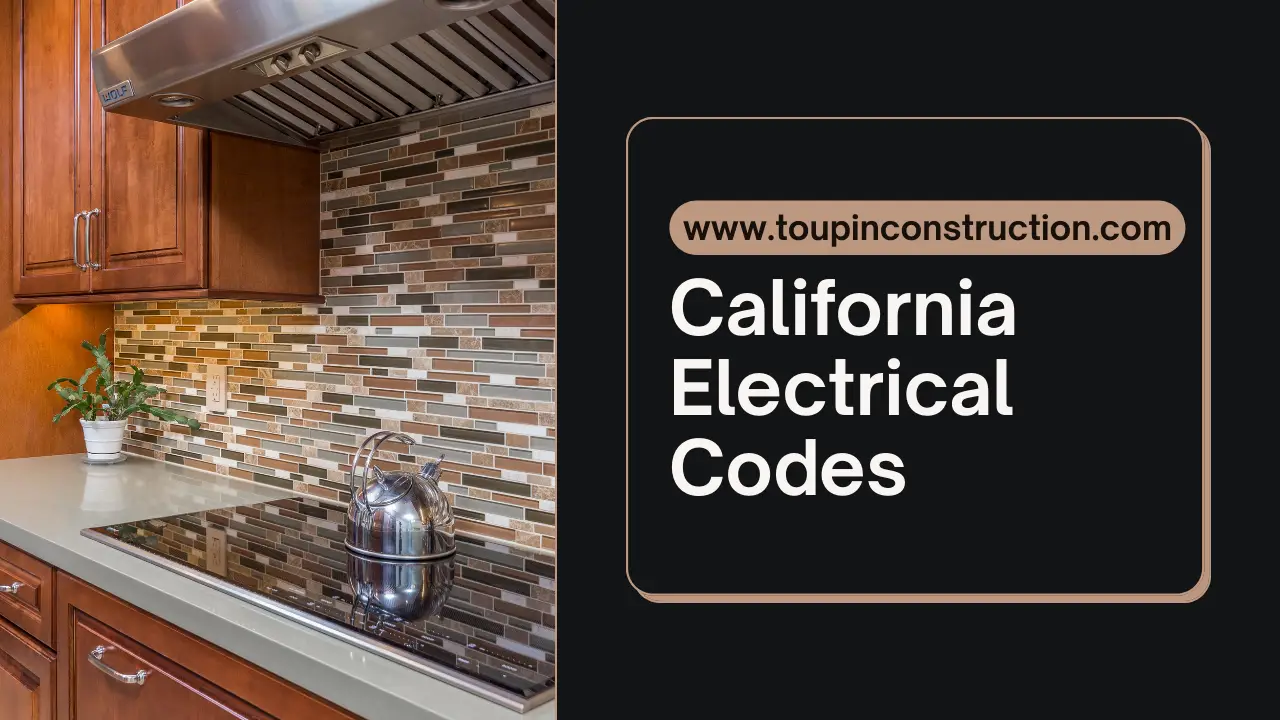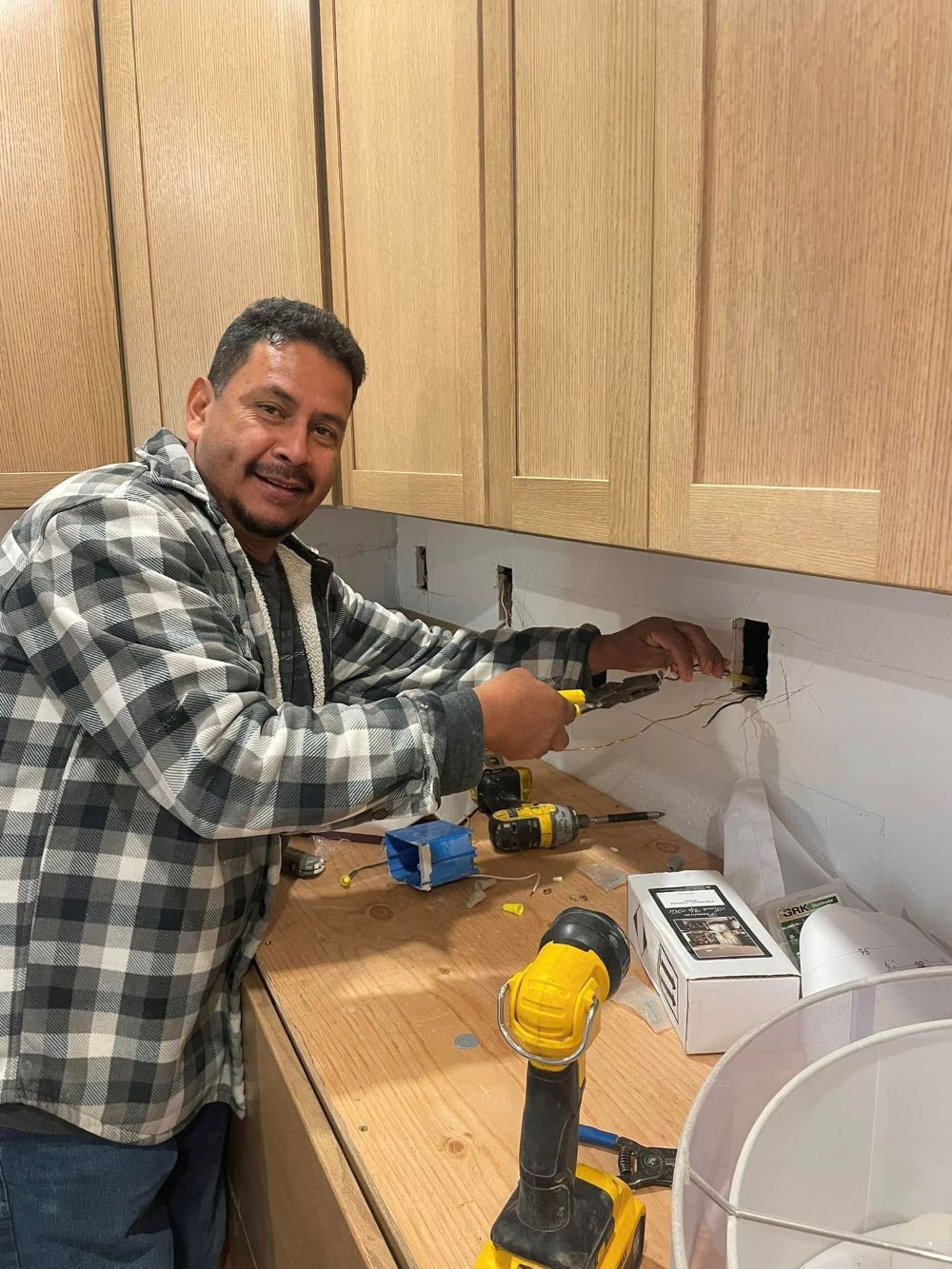By using our website, you agree to the use of cookies as described in our Cookie Policy
The Boss’s Daughter
California-Specific Electrical Codes: What Homeowners Need to Know

California-Specific Electrical Codes: What Homeowners Need to Know
Key Takeaways
-
California follows the National Electrical Code (NEC) with amendments in the California Electrical Code (CEC) and Title 24 energy standards.
-
Use tamper-resistant outlets in living areas, GFCI in wet zones and outdoors, and AFCI in all habitable rooms.
-
Follow spacing rules—no point more than 6 feet from an outlet; any wall over 2 feet needs one.
-
Kitchens require GFCI on all outlets, dedicated appliance circuits, and lighting on separate circuits.
-
Bathrooms need one outlet within 3 feet of the sink, full GFCI protection, and a dedicated 20-amp circuit.
-
Plan ahead for EV chargers and solar-ready wiring using dedicated 240-volt circuits.

Why California Has Its Own Electrical Rules
California’s Electrical Code builds on the NEC but adds protections for energy efficiency, seismic safety, and solar integration. If you’re remodeling in Walnut Creek, Rossmoor, or anywhere in the East Bay, you’ll see these standards referenced in every inspection.
Title 24: Energy Efficiency Comes First
Requires separate lighting and outlet circuits in kitchens and garages, and promotes efficient fixture choices.
Tamper-Resistant Receptacles (TRRs)
Now mandatory in all new construction and remodels—an essential child-safety feature.
Solar and EV Readiness
New homes must include panel capacity and conduit pathways for solar and battery upgrades, plus a 240-volt line for a Level 2 EV charger.
Seismic Safety
Electrical boxes must be securely mounted to reduce fire risk during earthquakes—something the East Bay’s inspection teams always check.
Room-by-Room Electrical Requirements
Living Rooms, Bedrooms, and Habitable Spaces
-
Outlet spacing: No point more than 6 ft from an outlet.
-
Walls: Any section > 2 ft needs an outlet.
-
Protection: TRR and AFCI required.
-
✅ Example: A 12-ft wall requires at least 2 outlets.
-
???? Local Note: Check City of Walnut Creek amendments for accessible-height requirements in senior housing.
Kitchens
-
Countertops: Outlets every 4 ft; any surface ≥ 12 in wide needs one.
-
Islands & peninsulas: At least 1 outlet if surface ≥ 24 × 12 in.
-
Protection: GFCI on all countertop outlets.
-
Dedicated circuits: Refrigerator, dishwasher, and microwave each get their own; lighting must be on a separate circuit (Title 24).
-
Code Tip: Use 20-amp small-appliance circuits for counters.
???? Planning a remodel? Explore Kitchen Remodeling Services
???? Learn more: Kitchen Electrical Codes Every Homeowner Should Know
Bathrooms
-
GFCI protection: Required for all outlets.
-
Placement: At least 1 outlet within 3 ft of the sink.
-
Dedicated circuit: 20-amp outlet circuit serving only the bathroom.
???? See inspiration: The Complete Bathroom Remodel Guide for Bay Area Homes
Hallways
-
Length rule: One outlet required if the hallway is > 10 ft long.
Laundry Rooms
-
GFCI protection: Required.
-
Washer: Dedicated 20-amp circuit.
-
Electric dryer: Dedicated 240-volt circuit.
-
Gas dryer: Dedicated 120-volt outlet.
Garages
-
GFCI protection: All outlets.
-
Minimum: One per vehicle bay.
-
EV chargers: Level 2 units need a 240-volt circuit and extra panel capacity.
???? Tip: Consider conduit for future battery storage or solar inverter integration.
Basements (Rare in California)
-
Finished spaces: Follow 6-ft spacing and GFCI protection.
-
Unfinished: At least one GFCI outlet.
Outdoor Areas
-
Protection: GFCI on all exterior outlets.
-
Weatherproof covers: Must protect outlets even while cords are plugged in.
-
Placement: At least one outlet front and back; decks and balconies need one if accessible from inside.
Specialty Spaces
-
Home offices: Follow 6-ft rule; add USB or smart outlets for convenience.
-
Media rooms: Add outlets behind wall-mounted TVs or consoles.
-
Solar-ready zones: Pre-wire dedicated circuits for panels or batteries.
Safety First: Know Your Protection Types
| Device | Purpose | Common Locations |
|---|---|---|
| GFCI | Prevents shock in wet areas | Kitchen, bath, laundry, exterior |
| AFCI | Prevents arc-fault fires | Bedrooms, living areas |
| TRR | Prevents insertion hazards | All habitable rooms |
Why These Codes Matter
Safety
California’s strict GFCI, AFCI, and TRR requirements sharply reduce electrical fire and shock risk.
Efficiency
Title 24 demands smart circuit separation and efficient lighting, helping homeowners lower long-term energy use.
Future-Proofing
Adding EV and solar circuits during remodels saves time and money later.
Local Compliance
Each city, including Walnut Creek, adds its own inspection nuances—always verify with the City of Walnut Creek Permit Center before submitting plans.
Partner with Professionals
Electrical work is never a DIY moment.
At Toupin Construction, we’ve remodeled thousands of homes across Walnut Creek, Rossmoor, and the East Bay. Our licensed electricians handle permits, Title 24 documents, and full inspections so your project is compliant and worry-free.
???? See a real example: Rossmoor Full Kitchen Remodel
FAQ
Q: Do I need tamper-resistant outlets in a remodel?
Yes. TRRs are required in all new builds and remodeled living areas.
Q: Where are GFCI and AFCI required?
Use GFCI in wet or outdoor areas, and AFCI in living, sleeping, and similar spaces.
Q: Which kitchen appliances need dedicated circuits?
Refrigerators, dishwashers, microwaves, and garbage disposals each require one.
Q: What’s the island/peninsula outlet rule?
Add at least one outlet if the surface is 24 in × 12 in or larger.
Q: How do I prepare for EV or solar upgrades?
Install a 240-volt circuit and reserve panel space or conduit for future battery storage.
Compliance Summary Table
| Space | Protection | Spacing | Dedicated Circuit |
|---|---|---|---|
| Living/Bedrooms | TRR + AFCI | 6 ft | — |
| Kitchen | GFCI | 4 ft counters | Fridge, Dishwasher, Microwave |
| Bathroom | GFCI | 3 ft from sink | 20 A outlet circuit |
| Laundry | GFCI | — | 20 A washer, 240 V dryer |
| Garage | GFCI | — | 240 V EV charger |
| Exterior | GFCI | Front & Back | — |
Final Thoughts
California’s electrical codes might feel complex, but they protect your family and add long-term value.
Whether you’re adding outlets to a Rossmoor condo kitchen or prepping your Walnut Creek garage for an EV charger, Toupin Construction ensures your remodel meets every Title 24 and CEC requirement—without compromising design.
???? Contact us today to plan your next remodel with full code confidence.
‹ Back




Comments